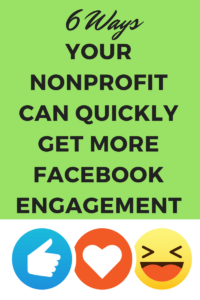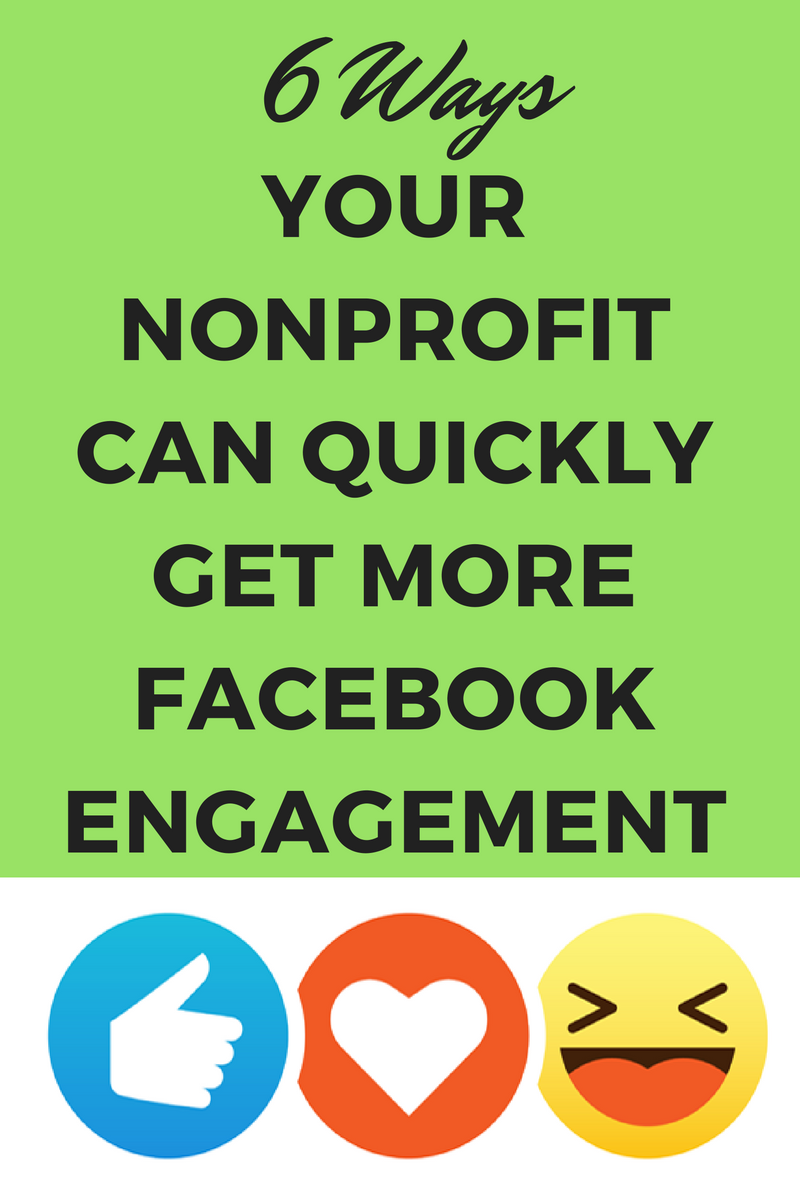 The friendly folks at Facebook have tweaked the News Feed algorithm again, now putting an explicit priority on posts from family and friends over pages.
The friendly folks at Facebook have tweaked the News Feed algorithm again, now putting an explicit priority on posts from family and friends over pages.
However, as with all changes to the Facebook News Feed, I encourage you to breathe and do not panic.
This is nothing new, but as with every other algorithm update, it requires some strategizing and review of your nonprofit social media strategy.
Facebook itself is a business, and it has a responsibility to consistently show its users “the stories most relevant to them”.
This means that yes, a post from my brother or my best friend will appear higher on my News Feed than an update from your nonprofit’s page.
If you are still doing the same old thing on Facebook, you need to change it up or get completely lost in the clutter.
Here are 6 things that your nonprofit can try to quickly get more engagement on Facebook.
1) Experiment with Facebook Live video.
I know I harp on this a lot, but it’s important. The higher-ups at Facebook itself love their shiny new tool, Facebook Live, and they are pushing it every chance they get.
This is great news for those early adopters that use it, as their live videos get priority in the News Feed, and are shown to a higher percentage of their fans than a normal post.
I’m willing to be that the majority of your donors and supporters are fairly comfortable viewing live video on Facebook.
They may even be commenting, asking questions, and interacting in real time. They may even be streaming their own live videos!
Anyone can do Facebook Live—look at the amazing success of Chewbacca Mom! (Her laugh is very infectious, I have to admit.)
For more tips on setting up Facebook Live for your nonprofit, check out my post on The Balance: How Your Nonprofit Can Get Started with Facebook Live Today and John Haydon’s article 35 Facebook Live Ideas to Show the Impact of Your Nonprofit.
2) Post short videos frequently.
There is no doubt that video rules social media, but does especially well on Facebook. The social network claims 8 billion video views daily.
Short video, 1 minute and under, is ideal for the snack-sized attention spans that dominate social media. Video is also very consumable on the go, and very shareable.
Using just your phone, you can create entertaining and interesting videos for your Facebook fans in just minutes.
As an added bonus, video uploaded directly into Facebook will start playing automatically when someone comes across it in their News Feed. Facebook is even playing around with automatically playing the sound when it serves video up to users.
The movement of video on Facebook catches the eye and makes people more likely to stop what they are doing and click on the video, watch it, or share it. It has become an absolutely vital part of any nonprofit marketing strategy.
The good thing is that it’s easy to do – Facebook users do not expect (or want) perfection in their videos. They value authenticity, relevance, and entertainment.
Having good sound is important, but having a polished, professional-looking video is not a crucial quality of social media video.
For more tips on posting high-quality videos that your fans will love, read Andrea Vahl’s great article in Social Media Examiner.
3) Share visual stories.
Visual stories elicit the most engagement on Facebook, because these posts look most like what people expect and like to see when they log in.
The Boston Children’s Hospital does an excellent job of collecting and sharing fantastic, emotional stories on its Facebook page. Almost every post is an eye-catching photo with the beginning of a great story in the caption, and a link to read more of the story on their blog.
Pro Tip: Enticing your Facebook fans to click on an outside link is no easy feat, but once they are on your blog and your website, you can capture more information about them, thus making it easier to cultivate a deeper relationship.
The truth remains that your Facebook fans will hardly see any of your posts-unless they are superfans-but if they join your email list, you are on the cusp of creating a long and loving relationship.
4) Post educational content.
Content that shocks or surprises us, teaches us about an issue, or helps us solve a problem works well on Facebook.
Take this great example from the St. Baldrick’s Foundation, sharing information and statistics about childhood cancer in the U.S., and encouraging users to share to raise awareness.
5) Demonstrate your authority on an issue.
Show that you are the authority on a subject and that you are qualified to tackle the problem.
If there is a conversation going on around homelessness, opiate addiction, domestic violence – if people are talking about the issue that you care about – step up and chime in
Rosie’s Place in Boston frequently posts information related to current events and conversations around hunger and poverty in Massachusetts, and how they are helping.
6) Show people the results of your work.
This is the most important. Along with visual stories, you should always be proving yourself to your donors and your supporters, on Facebook and beyond.
Creating shareable graphics on Facebook works well, because your fans may be compelled to share them on their timelines, thus gaining you more eyeballs and exposure to new supporters.
Check out these examples from World Food Program USA and Oxfam:
So you see, there are still quite a few things you can do to get in front of your fans on Facebook. Let me know if you have other ideas – put them in the comments!
Is your Facebook Page putting your fans to sleep?

Do you wish you had more engagement and more activity on your Facebook Page?
Wake up your sleepy page with this free download!
In this download, you will get 20 ways to reinvigorate your page and get more engagement from your fans!
Enter your email and then keep an eye on your inbox!
